Alone in the sky is not a warrior
Russian aircraft must have characteristics similar to those of the American F-22 Raptor: supersonic speed (more than 1200 km / h), super maneuverability, low visibility in the infrared and radar fields. In addition, special requirements are placed on the "intelligence" of the machine. The plane should be able to create a circular information field around itself, aim at the same time at air and ground objects, shoot at the enemy from all angles: forward, sideways and even backward.
At the same time, one of the main tasks facing the developers is to reduce the time and cost of maintenance. The cost of the flight should also be reduced compared to existing samples. Now the hour of the Su-27 flight costs about $ 10 000, while the American F-22 “burns” for only $ 1500 per hour.
A long time ago
For the first time, the appearance of the new machine has become known, according to the tradition that has developed since the USSR, from foreign sources. A few years ago, an unsigned drawing appeared on the Indian Internet forum. The fact that this is a real project, we learned a year and a half or two years later, when the second colorful drawing T-50 appeared on the official website of NPO Saturn. The picture was quickly removed, but it managed to crawl all over the Internet.
Work on the creation of the fifth generation fighter was launched in the USSR almost thirty years ago. The I-90 program envisaged first of all the creation of a long-range interceptor capable of replacing both the Su-27 and the MiG-31 with one project. It was assumed that the new fighter should become a rival to the American “prospective tactical fighter” (ATF) being developed at the same time.
According to the book “Russian Air Defense Aviation”, the main requirements for the new machine were: interception while ensuring high values of supersonic boundaries; conducting a successful air battle, including in group actions and in a difficult radio environment; striking ground targets, that is, performing the tasks of an interceptor, fighter and attack aircraft. In fact, it was about creating a new class of aircraft, a kind of air analogue of the “main combat tank”, Designed to replace different types of cars. The full-scale work on a promising multi-functional aircraft fighter design bureaus of the Soviet Union began in 1981.
The first swallows were the MiG project 1.44 KB Mikoyan and Su-47 KB Sukhoi. But if the case of the Mikoyan machine didn’t move further than two test flights, then the Berkut Su-47, which flew into the sky in the 1997 year and demonstrated at numerous air shows, continues to fly even now. On account of this machine more than 300 flights. True, many experts have argued that this is not the “fifth generation”, but the very same Su-27, which differs from the “classical” predecessor only in a spectacular backward-swept wing. Anyway, the second copy of the "Berkut" was not built, and the existing one serves as a flying testing laboratory. Nevertheless, no one has any doubt that many decisions on the fifth-generation fighter of the Sukhoi design bureau were tested on this particular aircraft, and also that the real “fifth generation” will not have a backward-swept wing.
The second time the technical task for the new fighter was issued already in 1998 year. It has not undergone significant changes since the time of the IFIs, and already in 2002, the Sukhoi Design Bureau won a competition with the MiG designers. The maximum take-off weight of the new fighter increased to 35 T. In 2004, a project appeared “Promising Aviation Complex of Frontal Aviation (PAK FA)”, which was intended to replace the full-fledged “main fighter” Su-27 and the F-22 opposition. It is appropriate to recall that Ilya Klebanov, who at the beginning of 2000’s position as industry minister, insisted: the development of a fighter would require half a billion dollars. Now they say that in ten years about 10 billions of dollars have been spent ...
Ideas about what should be the fifth generation combat aircraft, can not be called unconditional. For example, domestic designers see the strength of such an aircraft in super-maneuverability, that is, the ability to maintain stability and controllability at high angles of attack (90 degrees and above). American experts after a series of experimental studies have concluded that the rapid improvement of aircraft armament, the emergence of highly mobile all-round missiles, new homing heads and helmet-mounted target designation systems will make it possible to abandon the mandatory entry into the enemy’s rear hemisphere. And in this case, the advantage in battle will give not the ability to perform super-aerobics, but the ability to “see” the enemy first and strike. The Americans preferred to focus on the overall dynamism of the fighter’s combat system and the achievement of low radar visibility. The general requirements for fifth-generation aircraft are: multifunctionality, i.e., high efficiency with the defeat of air, ground, surface and underwater targets; availability of a circular information system; the possibility of flying at supersonic speeds without afterburner; the ability to carry out an all-perspective attack of targets in a close air combat, as well as to conduct multichannel rocket firing while conducting combat at long range.
Battle for heaven
Anyway, the efficiency of the aircraft can be assessed only on the basis of its combat use, and the criteria for evaluating new cars should be created based on the combat experience of previous years.
For example, on the eve of World War II, aircraft designers fought hard for the speed of combat vehicles, suggesting that the “sky of war” should remain behind aircraft capable of outperforming the enemy in any situation. In the summer of 1939, the legendary test plane of the Messerschmitt Fritz Wendel managed to accelerate his piston Me 209 to the speed of 755,14 km / h, but it was a “swan song” of such planes. The problem was a sharply decreasing efficiency of the screw at high speeds: an increase in power did not lead to a proportional increase in speed. To achieve the new speed lines, a qualitatively new technical solution was needed, which was the jet engine.
The first aircraft GTE with a compressor, powered by an external engine, was proposed as early as 1909 by the French designer Marconié. In the same year, a Russian engineer N. V. Gerasimov received a patent for an aviation compressor GTE. However, at that time no one paid attention to these inventions, since the “ordinary plane” was also perceived as an extravagant novelty.
The priority of creating a “real” turbojet engine belongs to the English designer Frank Whittle, who tested his invention in the 1937 year. However, the first aircraft of the new generation went up to the sky in Germany. Ernst Heinkel became its builder. Werner von Braun’s engine was mounted on his He-176 rocket plane, and a turbojet engine, built by Hans von Ojne, was installed on a jet-driven He-178-V1 engine. These aircraft passed the first tests in the summer of 1939, and already on November 1, the jet fighter was demonstrated to Luftwaffe’s technical leaders Ernst Udet and Erhard Milch. However, the generals were indifferent to the use of a turbojet engine on an airplane and ... refused to finance the development of new fighters. The negative attitude towards jet aircraft was revised only in 1939 year, after the huge losses of the German Air Force in air battles. The fighters of the Messerschmitt company Me-1943 and Me-262, which had time to take part in the final battles over Germany, went into production. Moreover, the production of these aircraft was delayed for several months due to Hitler’s categorical demand for using Me-163 only as a high-speed bomber.
Historians are still arguing about whether the Luftwaffe could have won a victory for Hitler, if the generals were more perspicacious. Reich fighter aviation commander Adolph Galland, a big fan of the new aircraft, later claimed that a thousand jet Messerschmitts could turn the tide of an air war over Europe in favor of Germany. However, in their then skepticism, Udet and Milh were not so wrong. The practice of combat use of jet aircraft showed that high-speed fighter aircraft are ineffective in the absence of concomitant technological support for the aircraft industry. For example, the Me-163 rocket fighters, whose speed reached 900 km / h, could hardly be attacked by bombers flying at 400 km / h speeds. Due to the difference in speed for aimed firing, a 2-3 remained for a second — too short to effectively hit a heavy mechanical bomber. weapons. A jet engine could be a really dangerous enemy in an air battle, with comparable means of destruction - homing missiles, the technical basis for the production of which was created only in 1960's. In addition, the general concept of the use of jet aircraft remained unclear, and the Luftwaffe did not have the necessary number of trained pilots. The Germans could not build a sufficient number of new aircraft to withstand the allied piston fighters, who quickly learned to fight a dangerous enemy. Under the rubble of the jet Messers, such aces as Walter Novotny, Günther Lutzow, Heinrich Erler and many other famous pilots of the Third Reich met death. The victory in the battle for heaven remained for the pilots of the anti-Hitler coalition.
New time - new songs
Now the creators and customers of the T-50 have to solve a lot of problems before this essentially experimental plane can become a full-fledged combat tool. So far, we can only say with certainty: for the first time in a quarter of a century, a new glider has been created in our country. But that's all. Whether the T-50 product possesses the minimum qualities of a fifth-generation combat aircraft, namely, a constant speed exceeding 2000 km / h, a flight range over 5000 km, low visibility, the ability for long-range radar detection of the enemy, the presence of controlled long-range weapons, can only be judged by an interview with representatives of the Air Force, who in general highly appreciate the new aircraft. However, almost nothing is known about armament. According to the developer, OJSC GosMKB Vympel to them. I.I. Toropova ”, several samples of advanced weapons are being prepared for the PAK FA.
As for the engine, which should provide the speed characteristics of the T-50, exceeding those of the American F-22, then it just happened to be mysterious story. A year ago, the Commander of the Russian Air Force, Alexander Zelin, stated that the T-50 does not have an engine and is not expected in the near future. "While the plane will fly with the engine of NPO Saturn, and in the future will receive a new power plant," - added the general. It was about the engine developed by NPO Saturn 117С - in fact, a deep modernization of the commercially available engine AL-31F. However, on the day of the first flight of the fifth-generation fighter, managing director of NPO Saturn, director of programs for the PAK FA United Engine-Building Corporation (UEC) Ilya Fedorov reported a sensational news. It turns out that the T-50 is already equipped with “the newest engine, and not an improved analogue of the power plant for the Su-35, as some media outlets wrote and some“ experts ”said. Commander of the Air Force stood his ground. “At the moment we are raising the fifth generation aircraft on a non-native engine, that is, not on the one that will be on the production model. However, the decision to create a new engine was made, and the united engine-building corporation will create it. ” However, the purchase of fifty fighters is planned no earlier than 2015 of the year, and during this time some engine should appear.
On the issue remains the price of the new aircraft. The estimated estimated export value of the PAK FA will amount to about $ 100 million - huge money for the Russian military budget. In addition, by virtue of a small serial circulation, the prices of the car will be exorbitant and noncompetitive in the export market of armaments. Traditionally, buyers of Russian weapons - countries are not rich. And the very idea that the newest super-weapon will be exported is shocking. The United States does not even allow the idea of supplying F-22 to anyone, including the most loyal allies. At the same time, those who consider the cost of the American fighter to be exorbitant forget about elementary economic calculations. If today's production value of the F-22 is recalculated to the production volume that was planned at the very beginning of its creation program, then the cost of this, as it is believed, fifth-generation fighter of the fifth generation in the world will be $ 83 million.
By the way, the Americans did not take a bad life to reduce the purchase volumes of the F-22 fighter being built (from the originally planned 750 to 280). The fact is that by this time, the US Air Force revised the plans for the complete replacement of the F-15C fighter jets to the fifth-generation fighter being created and linked the acquisition of the F-22 only with the completion of the AEF expeditionary aviation armies. And the amount of F-22 that was previously planned to replace the F-15C was simply not required.
Alone in the sky is not a warrior
A feature of the fifth generation of fighters, distinguishing them against the background of the combat aircraft of the current generation, is a higher systematic approach. The fifth generation fighter can only be such as part of a special combat system, as they say, a “system of systems” that allows it to realize all its specific combat capabilities. This “system of systems” is associated, in the understanding of most specialists, with the information component of the combat operations process. The improvement of this component has already led to the emergence of the so-called centralized network control (CSB) fighting, which for fifth-generation fighters should become the main form of control over their use in solving combat missions. The CSB implementation assumes that not only combat aircraft, but also individual samples of guided weapons used by them, as well as various external sources of information and information processing and decision-making centers are becoming nodes of a single information network. The implementation of the CSB also assumes the existence of the very structure of information exchange links, with the exchange of sustainable and with the necessary information performance. It is precisely as an element of such a system, as a universal combat platform, adapted to the effective defeat of both air and ground targets, that F-22 stands. The absence of all of the above deprives a combat aircraft, adapted for use within the CSB, of all the advantages, turning it into an exhibit at an aviation exhibition.
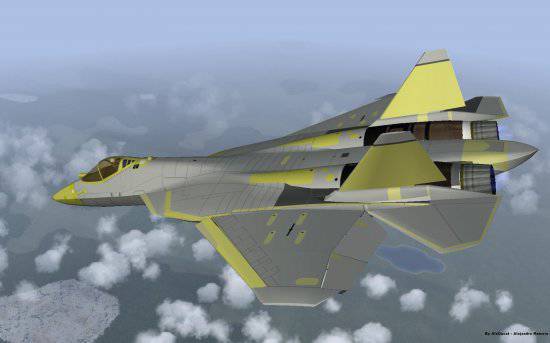
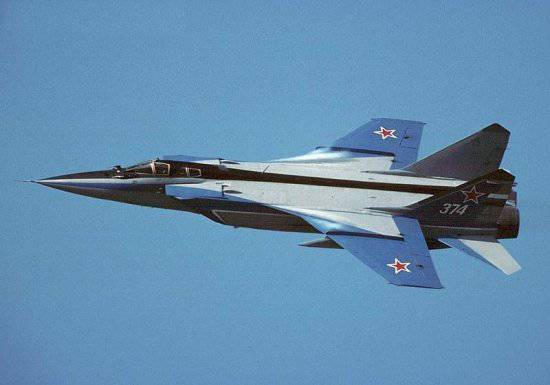
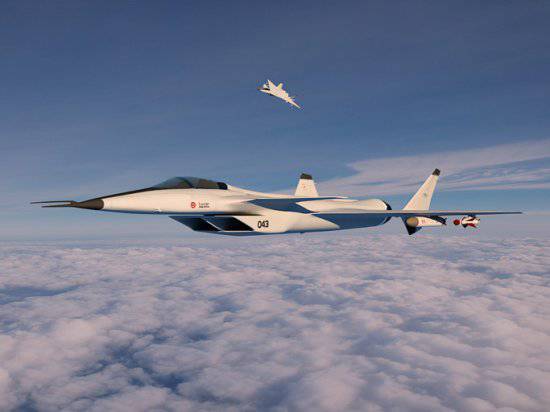
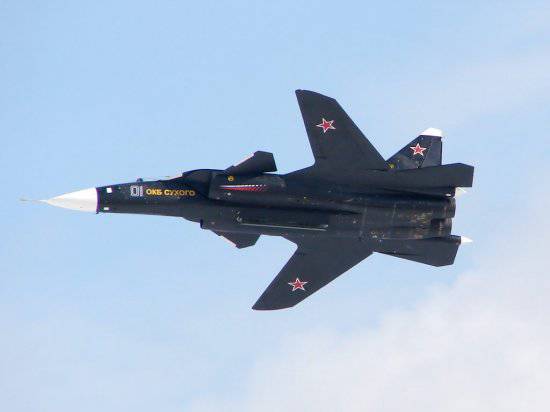
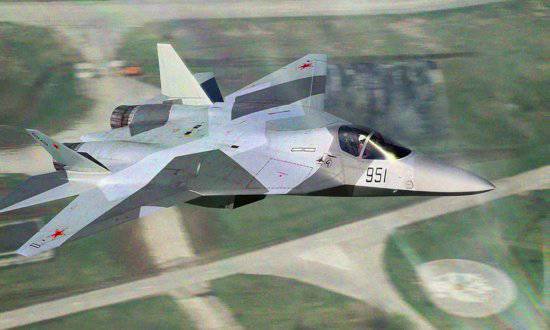
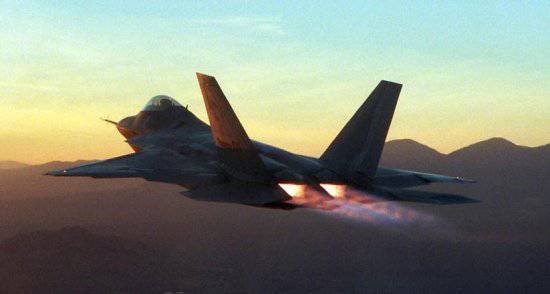
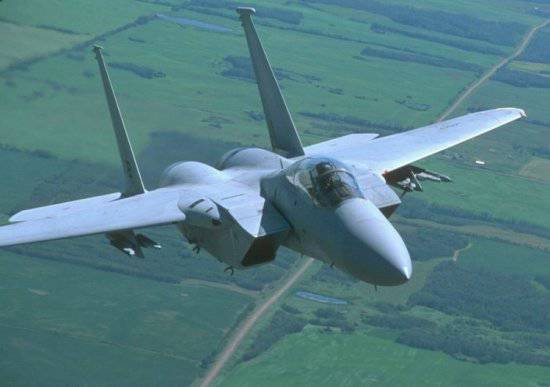
Information